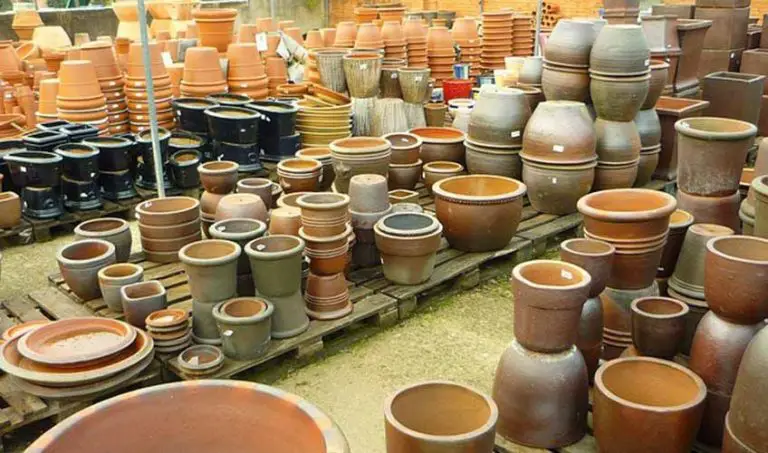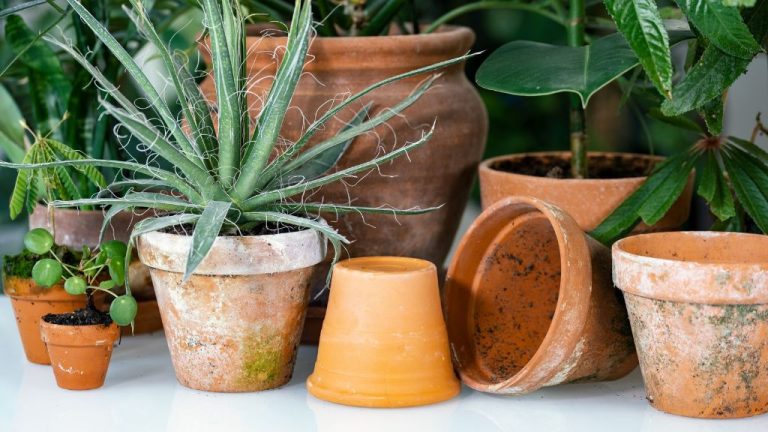What Is Cyan Stained Clay?
What is Cyan Stained Clay?
Cyan stained clay is a block that was added to Minecraft in version 1.12. It is one of the 16 different colored stained clay blocks that were introduced as part of that update. Stained clays are made by dyeing regular clay blocks on a crafting table.
Cyan stained clay is created by adding the cyan dye to a clay block. The cyan dye is obtained by crafting blue and green dyes together. This gives the clay block a vibrant cyan color. Cyan is a bright bluish green hue midway between blue and green on the color wheel.
Stained clays have a texture similar to hardened clay but are brightly colored. When mined, stained clay drops itself, rather than the dye or clay. This makes it a renewable resource. Stained clays can be used decoratively for builds and maps due to their aesthetic color variations.
Overall, cyan stained clay is simply a clay block that has been dyed cyan. It offers builders a cyan-colored block option for constructions and designs.
Origins and History
Cyan stained clay has origins dating back centuries to ancient cultures using natural clay deposits and plant-based dyes to create vibrant colored building materials. The earliest known examples come from medieval Persian architects who developed brilliant blue and green glazed bricks and tiles. The dye sources they used came from minerals like cobalt and copper as well as plant materials such as indigo. These colored clay products spread along trade routes into Central Asia, the Middle East, and Northern Africa.
In modern production, most cyan stained clay utilizes synthetic dyes rather than plant-based ones. It emerged as an arts and crafts material in the late 19th century as manufacturers developed new chemical dyes and ways to permanently color moist clay. While originally made by hand, most stained clay today is mass-produced using large mechanized systems to create consistent colors and textures.
The development of synthetic dyes in the 1850s that could permanently penetrate clay revolutionized stained clay, allowing consistent vibrant shades like cyan to be made affordably and in large quantities. This allowed stained clay to transition from specialized architectural use into popular decorative items. By the 1890s brightly colored stained clay became widely available to consumers and a staple of arts education, though production halted during World Wars I and II. After WWII, stained clay resumed popularity in schools and for hobbyists as a colorful, versatile modeling medium that maintains its pigmentation when fired into ceramic.
Composition and Properties
Cyan stained clay is made from clay that has been dyed cyan. The clay is composed of fine-grained natural earth that has been shaped and then hardened by firing at high temperatures. This gives the clay a hard, durable composition.
Some key properties of cyan stained clay include:
- Hardness – When fired, the clay becomes very hard and durable, similar to stone or ceramic.
- Plasticity – The clay is plastic and malleable when wet, allowing it to be molded into shapes.
- Colorfastness – The cyan dye permeates the clay so the color is permanent and does not fade.
- Non-porous – The dense clay does not absorb moisture when hardened.
- Resistance – The fired clay is resistant to weathering and deterioration.
- Thermal stability – It maintains its structure and properties under high temperatures.
These properties make cyan stained clay ideal for structural building materials, crafts, floor and wall tiles, pottery, and other decorative or functional items.
Obtaining Cyan Stained Clay
Cyan stained clay is obtained in the game Minecraft through the following methods:
Crafting – Combine 8 clay balls and 1 lapis lazuli in a crafting table to create 8 cyan stained clay blocks. Lapis lazuli can be mined from lapis lazuli ore blocks found underground.
Trading – Cyan stained clay can be purchased from master-level librarian villagers in exchange for emeralds.
Loot Chests – Cyan stained clay blocks can occasionally be found in jungle temple chests, desert temple chests, and mineshaft chests.
Creative Mode – In creative mode, cyan stained clay is available in the creative inventory and can be obtained unlimitedly.
The easiest way to obtain large amounts of cyan stained clay is through crafting or trading. To craft, simply gather clay balls and lapis lazuli, then combine in a crafting table. For trading, build a village and repeatedly level up a librarian villager until they offer cyan stained clay for emeralds.
Crafting with Cyan Stained Clay
Cyan stained clay is a very versatile material that can be crafted into a wide variety of decorative and functional blocks and items in Minecraft. Here are some of the many things cyan stained clay can be used to create:
Decorative Blocks: cyan stained clay works great for adding color to buildings and structures. It can be crafted into decorative blocks like stairs, slabs, walls, and more to liven up floors, walls, landmarks, and other builds.
Colored Terracotta: combine 4 cyan stained clay blocks with 4 sand blocks to craft cyan terracotta, a colorful hardened clay block. Terracotta is fireproof and can be used for unique building exteriors and accents.
Concrete: mix cyan stained clay with sand, gravel and water to create cyan concrete, a modern block perfect for contemporary builds. Concrete goes well with steel, glass and quartz.
Patterns and Mosaics: use cyan stained clay blocks to create custom textures, patterns and mosaics for flooring, walls, walkways, landscapes and more. Combine it with other colored stained clays.
Furniture and Items: craft cyan stained clay with other material like wood and wool to make customized furnishings, flower pots, armor stands, item frames and more make your buildings truly unique.
With so many options, cyan stained clay is an essential ingredient for adding creative flair to any Minecraft build.
Cyan Stained Clay Uses
Cyan stained clay has a variety of decorative and functional uses thanks to its vibrant blue color and durable properties. Here are some of the most popular uses for this unique block:
Decoration:
Cyan stained clay is frequently used by builders and architects for decorative purposes. The bright cyan color stands out and adds striking accents to buildings and structures. Cyan clay can be used to make cyan carpets, wall murals, cyan terracotta patterns, and other decorative flourishes. Its vibrant color makes it ideal for adding visual interest.
Color Coding:
Cyan stained clay’s distinctive color also makes it useful for color coding in things like maps, storage systems, or builds. For example, cyan clay can designate specific locations on a map. In storage chests, cyan can represent a certain item type or material. Builders may use cyan clay to mark a specific area that needs additional work.
Crafting & Recipes:
Cyan stained clay is an important crafting ingredient for making items like cyan banners, cyan terracotta, cyan glazed terracotta, cyan concrete powder, and cyan concrete. It serves as a dye source to create these cyan variants of other blocks and items.
Cyan stained clay’s durability and striking color make it handy for a variety of decorative and functional purposes. Builders, crafters, architects, and mapmakers all have uses for this vibrant blue clay.
Cyan Stained Clay Appearance
Cyan stained clay is known for its bright, vibrant cyan blue color. It has a glossy, smooth texture and an iridescent quality that makes it shine when exposed to light. The rich cyan hue stands out boldly whether used on its own or alongside other colored blocks.
When crafted or placed as a full block, cyan stained clay demonstrates its saturated teal color in all its glory. The cyan stained clay almost appears to glow from within. Small accents of cyan stained clay deliver eye-catching pops of color amidst other muted blocks.
Cyan stained clay registers as a very saturated shade of blue on the color wheel. Its vivid cyan coloration is bolder and brighter than lapis lazuli or diamond blocks. Cyan stained clay is brighter but slightly less neon than light blue stained glass. The striking cyan shade attracts attention and livens up builds.
Cyan stained clay turns a slightly lighter, more faded pastel cyan color when reduced to item form in a player’s inventory. However, it returns to its saturated cyan blue when placed as a block. This color-shifting quality makes cyan stained clay a versatile decorative block with two useful color variations.
Cyan Stained Clay in Architecture
Cyan stained clay has become popular in architecture and design due to its vivid blue color. The clay can be used to add pops of color to buildings and structures in creative ways.
Examples of Cyan Stained Clay Used in Buildings and Structures
Cyan stained clay is often used as an accent material on building exteriors. For example, the Oslo Opera House features cyan stained clay tiles on its roof and portions of the exterior facade. The bright blue tiles contrast beautifully against the white concrete walls.
Cyan stained clay tiles have also been integrated into public spaces like parks, plazas, and boardwalks. The Navy Pier in Chicago has vibrant blue tiles made from cyan stained clay decorating parts of its promenade. This use of color helps brighten and enliven public areas.
Artists and designers have also used cyan stained clay for architectural sculpture and installation art. The artist Isamu Noguchi created a large scale cyan stained clay sculpture called “Skyviewing Sculpture” for a park in Seattle. The abstract blue sculpture becomes an eye-catching focal point against the park’s greenery.
Cyan stained clay adds a pop of color and visual interest when thoughtfully incorporated into buildings and public spaces. Its vibrant blue hue stands out and creates contrast against natural materials like stone and wood.
Other Colored Stained Clays
In addition to cyan, Minecraft offers 15 other colors of stained clay that can be used for building and crafting. These include:
- White Stained Clay
- Orange Stained Clay
- Magenta Stained Clay
- Light Blue Stained Clay
- Yellow Stained Clay
- Lime Stained Clay
- Pink Stained Clay
- Gray Stained Clay
- Light Gray Stained Clay
- Cyan Stained Clay
- Purple Stained Clay
- Blue Stained Clay
- Brown Stained Clay
- Green Stained Clay
- Red Stained Clay
- Black Stained Clay
Each color of stained clay has a distinct appearance and unique properties in Minecraft. Cyan stained clay stands out with its bright aqua blue coloring. It pairs well with many builds and color palettes. Other lighter shades like white, light gray, and light blue complement cyan in modern builds. Darker shades like brown, gray, and black make cyan pop when used together. Cyan stained clay is extremely versatile for all types of projects and builds in Minecraft.
Cyan Stained Clay Trivia
Cyan stained clay has some fascinating historical origins and unique properties that make it stand out from other building materials.
One interesting fact is that cyan stained clay was first created accidentally by medieval alchemists experimenting with different mineral mixtures. The vivid blue color happened by chance when copper compounds were introduced into clay and fired at high temperatures.
In the 18th century, cyan stained clay became popular with architects in Northern Europe who wanted to mimic exotic lapis lazuli stone. The blue clay was much cheaper and easier to source locally.
Unlike natural clay deposits found in the earth, cyan stained clay can only be produced artificially by intentionally staining and firing clay with special mineral pigments.
The exact chemical composition of the cyan pigment used in stained clay is a closely guarded trade secret among manufactures. This proprietary dye process is what distinguishes cyan clay from other colored clays.
When incorporated into buildings and architecture, cyan stained clay never fades or loses its vivid blue color. The pigment permanently penetrates and transforms the clay so it maintains its hue over centuries.
No two deposits of cyan stained clay are exactly alike. Depending on the mineral content of the raw clay and firing techniques, the blue color can range from sky blue to deep cerulean.
While not as strong as modern concrete, cyan stained clay bricks are surprisingly resilient and resistant to weathering. Many medieval structures made from this material still stand today.
Cyan clay gets its name from the pigment cyanamide. This organic compound is what gives the stained clay its distinctive blue color when heated.



